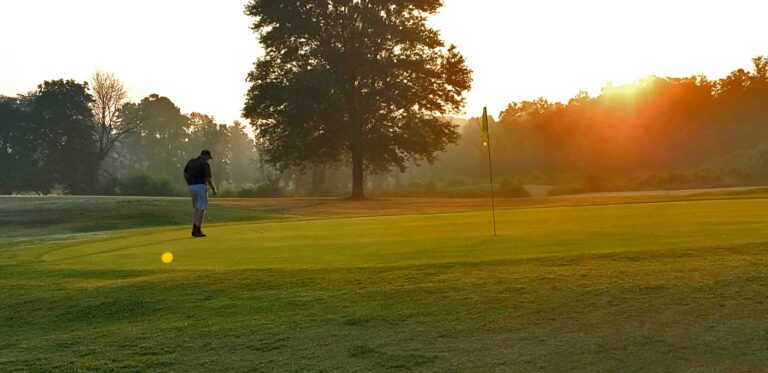Proposal is in the “comment period” until mid-August and golf’s governing bodies – the USGA and R&A – are getting a lot of feedback from all sides
The proposal for a Model Local Rule to implement usage of a rolled-back-distance golf ball by elite male golfers in competition by 2026 is in the “comment period” until mid-August, and golf’s governing bodies – the USGA and R&A – are getting a lot of feedback from all sides.
Notable golf icons such as Jack Nicklaus and Tiger Woods have long been in favor of regulating the golf ball and have some prominent players such as Rory McIlroy in their camp. Other active major champions such as Justin Thomas and Webb Simpson have questioned the rationale for reducing the distance a ball can fly when hit by the world’s best golfers.
Generally, golf course architects and equipment manufacturers have lined up on opposite sides of the aisle in this debate.
The majority of our Golf Power Poll respondents leaned slightly toward the side of the governing bodies trying to take a stand against distance gains, but the balance of opinions illustrates just how difficult this challenge will be. The proposed ball rollback earned a modest endorsement as the best way to address distance gains (69-64 in votes) while a significant minority (21 percent) believe that trimming 14-15 yards in maximum distance elite players can hit the ball would make the competitive game less interesting.
“After decades of discussion and five years of research on the topic something needs to be done,” said Terry Moore, the founding editor of Michigan Golfer. “Major League Baseball, by comparison, has done a much better job of maintaining the traditional dimensions of its venues by policing its implements. … If this new rule for elite players needs adjustments after implementation, do it. This is not akin to amending the Constitution.”
A healthy majority (61 percent) believe that it would be detrimental to the game if only the major championships utilized a reduced-flight golf ball, while 54 percent believe that equipment regulation is the best way to protect the relevance of classic venues used in majors. Only 35 percent believe the burden of combating distance increases should fall to the individual courses via adding length or altering setups.
“Ideally, this step wouldn’t be necessary. But it is,” said Rick Woelfel, a writer, editor and podcaster. “Increasingly, the courses used for tour-level competitions/major championships are being rendered obsolete. Restricting the flight of the golf ball offers the best practical solution. Spending immense amounts of money to modify existing courses places an unnecessary burden on facilities and the men and women who maintain them.”
Our pollsters are torn on whether the golf ball is the best answer.
“Proposed two sets of equipment rules 30 years ago during my career as a golf writer because elite players were already outdistancing tour sites,” said author Richard Mudry. “This is long overdue. The majority of recreational golfers can stay with same equipment as they play today.”
“The change should involve increasing the challenge of hitting distance. Reduce club head size makes more sense to me,” said John Maginnes, a former PGA Tour player and current radio host.
Martin Davis, editor and publisher of The American Golfer, believes the golf ball isn’t enough: “Actually the emphasis should be on the total distance with a ball AND club combination. A 14-15-yard reduction may not be enough. One of the joys of major championship golf is comparing players from different eras on essentially the same course. On many of the great layouts we’ve just about run out of room to keep moving tees back.”
Gary Van Sickle, a longtime golf writer and past GWAA president, concurs. “Everyone argues their own vested interest,” he said. “The fact is, about the only courses left that can challenge pro golfers are tour courses and majors, which have spent millions on adding length. The ball bifurcation may prove to be only a short-term fix. These guys are long.”
Herb Gould, a Chicago sports writer and co-founder of TMGcollegesports.com, addresses the thorniest aspect of a ball rollback. “If there was a practical way to reduce the distance of the pros’ golf ball in tournaments, that would be great,” he said. “The problem is, ball manufacturers would almost certainly object. And they pay a lot of bills. It would be a tricky deal with people who buy golf balls.”
Whichever side of the fence our pollsters are on, they believe there needs to be uniformity of compliance to a Model Local Rule if implemented in 2026. It would not be in golf’s best interest if players had to use a different golf ball in major professional and amateur championships than they would in all other competitions.
“Anyone recall the ‘one-ball’ rule? That was put into place decades ago to discourage players from using Topflite balls (yes, Topflite!) on longer holes, or those into the wind because they worked better and traveled farther,” said Janina Jacobs, freelance golf and travel writer.
“Today, no matter what the PGA/USGA does, the long hitters will still be just that. U.S. Opens prove a course can be set up to reduce scoring through narrow fairways, high rough, and fast greens. Forcing players to figure out yardages for their clubs with two separate golf balls would be a chore.”
If a reduced-flight ball does get implemented at the game’s highest level, a significant majority (77 percent) believe it will have no detrimental effect on interest in elite competitions (44 percent) or that it might make it even more compelling (33). Only 32 of 149 pollsters (21 percent) believe it would make it less interesting.
“I think limited distance balls would enhance more equitable competition and help keep iconic courses relevant and used in tournaments,” said Dan Shepherd, head golf professional at Fall River Country Club in Massachusetts.
“It should be obvious if they rollback the type of ball allowed in elite competition it will affect all the golfers involved,” said Ron Borges, longtime Boston sports writer. “Everyone loses 14-15 yards … so the competition remains unchanged. The issue seems more about protecting the venues from technology. That may be legit in some regard but regardless of what they do is the long hitters will continue to have the edge even if they are all hitting a beach ball. The real issue is not the ball. It’s the hi-tech clubs being swung. Want to solve the problem? Try persimmon woods!”
Golf writer and author David Barrett offers regulatory restraint: “I’m OK with bifurcation. But I would rather see the standard for elite players be set very close to the distance the pros are hitting it now rather than a significant reduction in distance.”
Whether it’s the ball or something else, poll respondents generally prefer equipment regulation to course alterations or harsh setups in an effort to combat distance gains.
“Let’s say football allowed the ball to go nuts the way golf did. Would you like 100 yard punts?” said Rick Reilly, former Sports Illustrated and ESPN columnist. “In baseball, do you want to see check swing home runs? As it is we’ve lost some of our finest courses for majors – Cypress Point, Cherry Hills, Merion, Pine Valley. Not every course can just buy adjacent land and Hulkify their holes like Augusta. Somebody has to protect the game because Bryson Dechambeau isn’t going to do it.”
Tim Gavrich, a senior writer at GolfPass, said: “It is frustrating to continue seeing responses along the lines of ‘Golf courses should just grow the rough up and shrink the fairways!’ Such an argument pushes 100% of the financial burden of continued increases in hitting distances onto golf courses, their members and superintendents, while letting the equipment companies – large entities with more than enough brainpower to deal with modest increases in regulations – get off scot-free. That argument is completely wrong-headed.”
“Most historic traditional courses are land locked with no way to add distance,” said Ron Gaines, a tournament administrator and Golfweek writer. “If they are to remain relative, some change must be made.”
Others think it’s up to the courses to find ways to maintain relevance if they want to remain championship venues.
“Tighter courses, shortening par 5’s, doglegs requiring actual shotmaking ability, less par 5’s during tournament rounds, premium on hitting fairways, premium on short game/putting, reposition existing hazards to today’s game,” said Dove Jones, a golf marketing specialist.
“Here’s a what if – what if #13 at Augusta was a par 4? Let them hit it long and make it tougher to make par,” said Jack Bacot, CEO/editorial director at J+L Media. “Slight adjustments or modifications to tour courses seem like a logical alternative.”
Said Steve Habel, publisher of GolfDaily.com: “The ball is not the problem in golf. Come to think of it, is there a problem in golf? Classic courses used in major championships can be tweaked to create tougher challenges for the upper echelon, making accuracy – not just length – uber-important.”
Bill Hobson, host on Michigan Golf Live, thinks the sanctity of the game is not at risk just because the top tier of golfers in the world can cut major venues down to size by “working hard to get better, longer, stronger.”
“When Roger Bannister shattered the 4-minute mile, I don’t recall reading reports suggesting all others to follow should begin wearing weighted shoes,” Hobson said. “I’ll gladly play all of the ‘endangered’ courses on the list and prove in vivid hackery, that they have not been rendered obsolete.”











